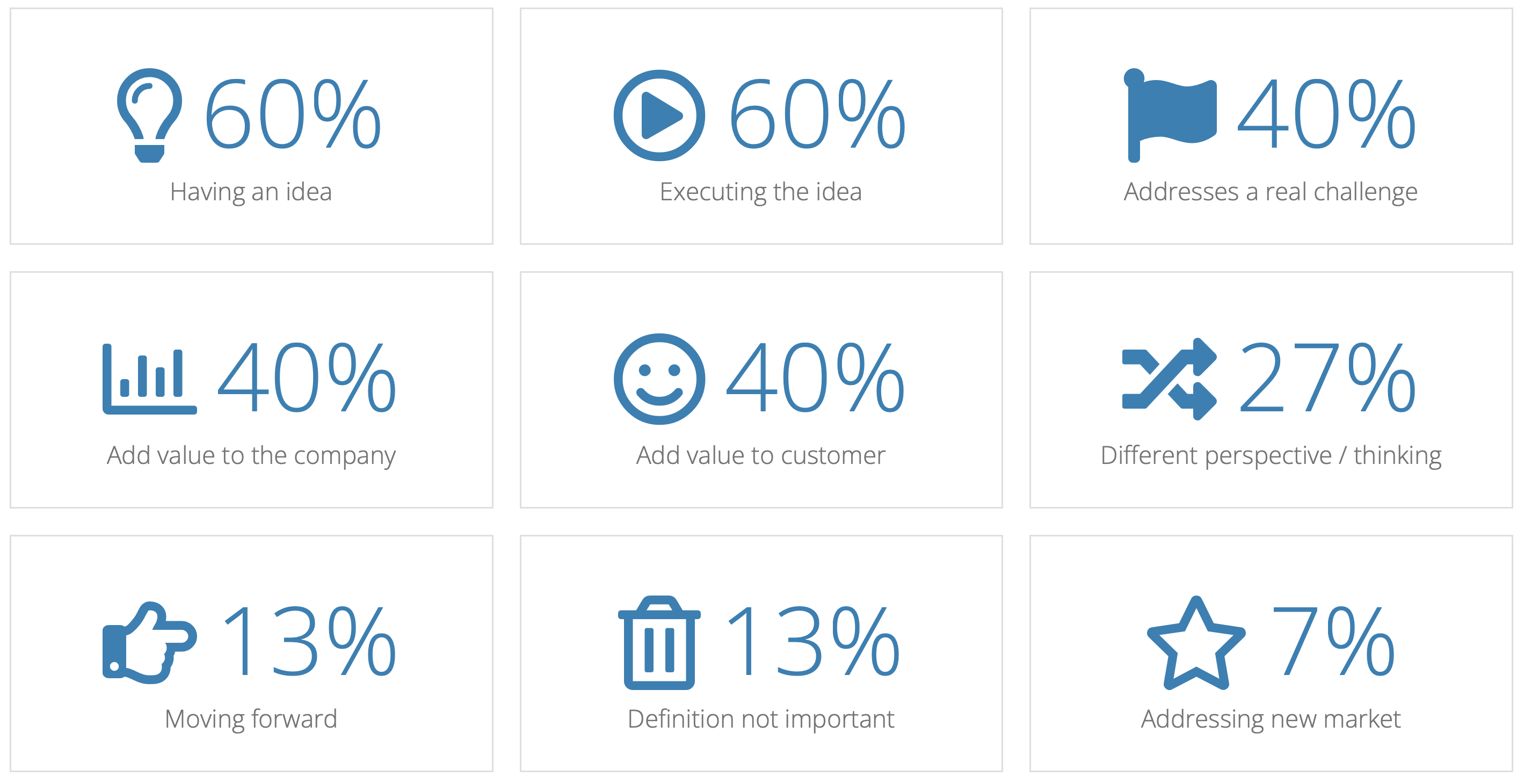It’s a hard job to be a HR manager part 2
It’s a hard job to be in HR nowadays – the innovation
In the first part of this series, we mentioned the challenges of workforce diversity. Diversified HR is important, but it is not the aim in itself. At any kind of enterprise, there are both external and internal imperatives for business in general. And probably the most common externally forced business imperative nowadays is innovation. But what is innovation? And what does it have to do with HR?
Innovation is truly a confusing buzzword which many love and many others love to hate. It is the king. Every business leader agrees on its importance. But nobody can quite seem to agree on what it actually is or what it means.
Innovation means…
If you ask Google for an innovation definition, it is less than helpful, coming up with over 300 million results with thousands of definitions. Its own definition is rather useless
“the action or process of innovating”…
Using a traditional source of a definition, such as the Oxford dictionary, doesn’t help much either, with their answer being
“Make changes in something established, especially by introducing new methods, ideas, or products”…
Having explored the approach of 15 greatest innovation thought leaders, Idea to value portal outlined the most important elements of innovation – leading to its synthetic definition:
Executing an idea which addresses a specific challenge and achieves value for both the company and customer…

However, what I really see in the chart above is that having an idea appeared in 60% of the given explanations as well as executing it. This means that the people’s core activities
having an idea and executing it
are the key to any innovation.
Hence we say: Innovation is a king, but it is nothing without people.
To be innovative people need a narrative.
George S. Day and Gregory P. Shea from MIT explored the meaning of innovative narration at different kind of companies. They investigated almost 200 managers various companies and discovered that the narrations and attitudes in those companies, characterised by organic growth, are of refreshingly upbeat, constructive, ambitious character like for instance:
“If you want to get ahead, build a new business…
Everyone knows our growth strategy…
Well-intentioned failures are learning opportunities.…
If you innovate and it’snot something that benefits the customer, then it’s not innovation.”
At the same time, at companies that are growing slower than their rivals, the prevailing narrative about innovation, is rather discouraging, for example:
“Immediate needs soak up our innovation resources…
There are no carrots when it comes to innovation, only sticks…
Innovation activities are usually just added to our primary operating responsibilities… ”
Out of four leverages of innovational growth, two are clearly HR based. These are: “Invest in innovation talent” and „Align metrics and incentives with innovation activity”. [1]
Innovation – needs a collaborative workspace
Promulgation of narration of any kind needs communication. Smooth information flow is a key focus area for any modern business. It is also one of the contemporary roles of HR, to encourage continuous communication flow, even if it takes a form of informal conversations or private chats. These theoretically, or rather historically, unwelcome workplace behaviours can lead to often inspiring solutions, and skilfully moderated, can prove a source of innovations. The role of learning in communication should not be forgotten. Many operation managers aim for excellence in executing but disappear from the stage when communication, feedback, team facilitation are needed.
Especially in case of the ever-growing number of businesses employing, hourly workers or gigs, informal thoughts exchange is crucial for the establishment of the so-called ‘shared approach’. Freelancers are often moving from one business to another. Just like bees pollinating flowers, they carry over their experience. These workers are, therefore, typically the best source of innovative ideas. Contaminating them and binding with the shared philosophy or approach is the best way to take advantage of their knowledge.
Technically, legacy communication models such as telephonic conversations or emails are already replaced by online scheduling. These include real-time messaging and task management embedded in a common platform. This brings us to the next part of the series, but let us summarise first.
As we could see, both the providence of innovation based narration and its communication are expected from the HR side of the company – just like the corporate culture is and many others.
It is perfectly understandable, that stuck between the regulatory regime of remuneration systems, collective agreements, and labor law, constantly engaged in recruitment and worried by retention rate and trying to understand why HR must now produce some KPI’s and metrics the HR people rarely think about such ephemeral issues as narration. But it is also your job, dear HR manager, to create THE story that will make your people work better and that will trigger innovation.
Our team, of course, will be happy to help!
author: Karolina Wysocka